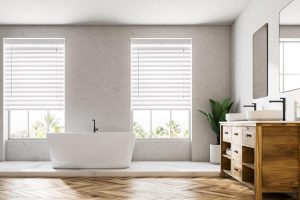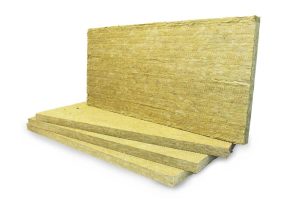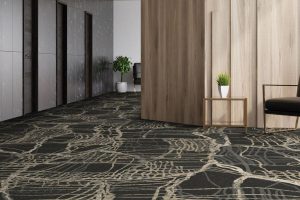Indoor trees have become a popular addition to modern interior decor. They not only add a touch of nature to our living spaces but also offer numerous benefits. Among the various indoor tree options available, low-light indoor trees stand out for their adaptability and ease of maintenance.
Top Varieties of Low-Light Indoor Trees
- Ficus lyrata (Fiddle Leaf Fig): With its large, lush leaves, the fiddle leaf fig is a favorite among indoor tree enthusiasts. It thrives in moderate to low light conditions, making it an excellent choice for homes with limited natural light.
- Sansevieria (Snake Plant): Known for its air-purifying qualities, the snake plant can tolerate low light and infrequent watering. It’s an ideal choice for beginners.
- Dracaena marginata (Dragon Tree): This striking tree features red-edged leaves and can thrive in low to moderate light conditions. Its unique appearance adds an artistic touch to any room.
- Peace Lily: With elegant white blooms, the peace lily thrives in low light and helps purify the air, making it a perfect addition to bedrooms or offices.
- Chinese Evergreen: Adaptable and low-maintenance, the Chinese evergreen is an excellent choice for low-light spaces.
- ZZ Plant: The ZZ plant is virtually indestructible, making it ideal for those with little plant care experience. It thrives in low light and can go without water for weeks.
- Rubber Plant: Rubber plants are known for their striking, glossy leaves and can do well in low to moderate light conditions.
- Pothos: A popular choice for its trailing vines, pothos is a low-light-loving plant that adds a touch of green to any room.
Caring for Low-Light Indoor Trees
To ensure your low-light indoor trees thrive, follow these care guidelines:
- Light Requirements: While these trees can handle low light, they still need some indirect sunlight. Place them near a window but out of direct sunbeams.
- Watering Tips: Overwatering is a common mistake. Allow the soil to dry out between watering to prevent root rot.
- Proper Potting and Soil: Use well-draining soil and a pot with drainage holes to avoid waterlogged roots.
- Pruning and Maintenance: Regularly trim dead or yellowing leaves to encourage healthy growth.
Creative Uses of Low-Light Indoor Trees
Besides their aesthetic appeal, low-light indoor trees offer several creative uses:
- Home Decor and Aesthetics: Indoor trees can complement various decor styles, from modern to bohemian, adding a natural touch to your space.
- Air Purification: Many of these trees are excellent at filtering the air, removing toxins and providing cleaner indoor air.
- Feng Shui Benefits: Indoor trees are believed to bring positive energy, prosperity, and good luck when placed strategically in your home.
Overcoming Common Challenges
- Dealing with Pests: Keep an eye out for common indoor plant pests like spider mites and mealybugs. Regularly inspect your trees for signs of infestations.
- Preventing Overwatering: Use a well-draining potting mix and water your trees sparingly to avoid root rot.
- Tips for Improving Air Circulation: Place a fan near your indoor trees to ensure good air circulation, especially in low-light spaces.
Where to Buy Low-Light Indoor Trees
You can find low-light indoor trees at various places, including local nurseries, online plant shops, and specialty stores. Explore different options and choose the best fit for your space and budget.
Cost Considerations
The price range for low-light indoor trees can vary depending on factors like the plant’s size, age, and rarity. Generally, low-light indoor trees are affordable and provide an excellent return on investment.
DIY Indoor Tree Projects
If you’re feeling creative, consider DIY indoor tree projects, such as:
- Growing from Cuttings: Propagate your own indoor trees from cuttings, saving money and creating unique plants.
- Creating Terrariums: Design your mini indoor tree ecosystems within glass containers for a stylish and low-maintenance display.
- Decorative Planters: Personalize your indoor trees by selecting unique pots and planters that match your decor.
Low-Light Trees for Every Space
Whether you have a small apartment, a spacious office, a cozy bedroom, or a humid bathroom, there’s a low-light indoor tree that will thrive in your space.
Benefits Beyond Aesthetics
Low-light indoor trees offer more than just visual appeal. They can also contribute to your well-being, including stress reduction, increased productivity, and improved indoor air quality.
Customer Reviews and Recommendations
Read what others have to say about their experiences with low-light indoor trees. You can also find expert recommendations on the best tree varieties for your specific needs.
The Art of Decorating with Indoor Trees
Discover the art of decorating with indoor trees, including choosing the right spot, matching decor styles, and adapting to seasonal variations.
The Green Thumb’s Guide to Success
Learn from common mistakes to avoid when caring for your indoor trees and gather expert tips for ensuring they flourish.
Sustainability and Indoor Trees
Explore the environmental impact of indoor trees and discover how caring for these plants can be a sustainable choice.
Conclusion
In conclusion, low-light indoor trees offer beauty, versatility, and numerous benefits. They are a fantastic addition to any home or workspace, enriching your surroundings while requiring minimal effort to maintain.

FAQs
1. Can low-light indoor trees really thrive in low light conditions? Yes, many low-light indoor trees are specially adapted to thrive in minimal natural light, making them suitable for various indoor spaces.
2. What are the best low-light indoor trees for beginners? If you’re new to indoor plants, consider starting with the snake plant or ZZ plant, as they are exceptionally low-maintenance.
3. How often should I water my low-light indoor trees? Allow the soil to dry out between watering, typically every 2-4 weeks, but adjust based on your specific environment.
4. Can I place my low-light indoor tree in a bathroom with low light and high humidity? Yes, many low-light indoor trees are well-suited for bathrooms, as they thrive in such conditions.
5. Are low-light indoor trees suitable for offices and workspaces? Absolutely! Low-light indoor trees can enhance the ambiance and air quality in offices, contributing to a more pleasant and productive work environment.



